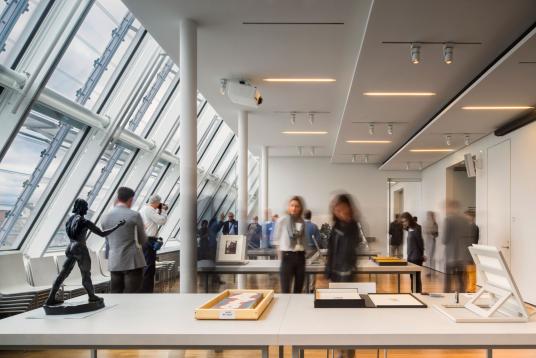In this public lecture, Nicholas Mirzoeff, professor of media, culture, and communication at New York University, will provide a genealogy of the visual commons, which he defines as “where we practice freedom, see each other, invent each other, and create a common space between us that cannot be owned.” He will discuss the origins of “abolition democracy” in Haiti, Reconstruction-era South Carolina, the 1968 Resurrection City encampment in Washington, D.C., and most recently, in the #BlackLivesMatter movement—which has extended, adapted, and above all, made visible this way of seeing. He will show how #BlackLivesMatter strategies like Hands Up, Don’t Shoot, die-ins, and the disruption of mass transport have made us look, and keep looking, at that space where the police say, “Move on, nothing to see here.”
This event will take place in Menschel Hall, Lower Level.
Free admission. Tickets for the lecture will be distributed after 5pm, on the Lower Level, on a first-come, first-served basis, and are limited to two per person. The lecture hall doors open at 5:30pm.
The museums will stay open until 10pm on November 12 to allow for time in the galleries before and after the lecture.
Complimentary parking available in the Broadway Garage, 7 Felton Street, in Cambridge.
![Guides for Gallery Experiences [Peabody Essex Museum, Salem, MA]](https://sites.tufts.edu/museumstudents/wp-content/themes/kale/sample/images/thumb2.jpg)
![VOLUNTEER FOR THE 242nd BOSTON TEA PARTY REENACTMENT [Boston Tea Party Ships & Museum, Boston, MA]](https://sites.tufts.edu/museumstudents/wp-content/themes/kale/sample/images/thumb1.jpg)

